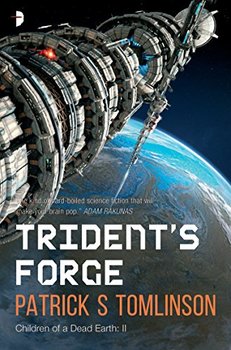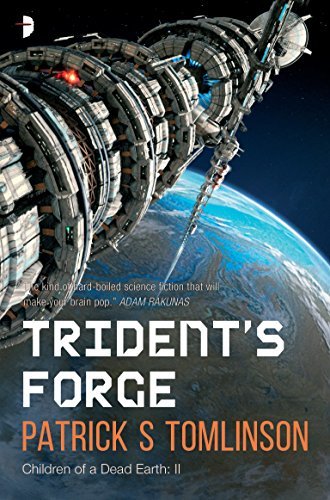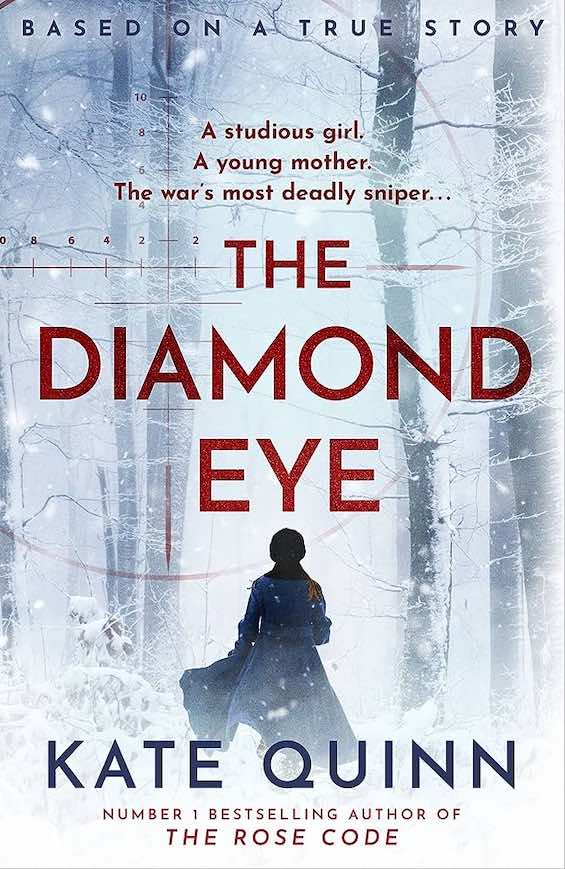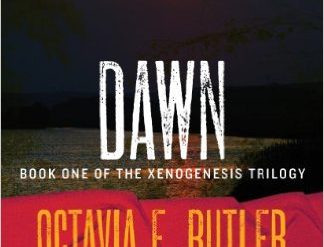
Estimated reading time: 5 minutes
The Ark has arrived at Tau Ceti g after a voyage of 235 years. The 30,000 clones who have survived the harrowing journey to this planet they call Gaia represent the eleventh generation since the Ark‘s departure from Earth. They are the remnants of humanity after a wandering black hole swallowed the planets of the solar system. And now, shortly after their arrival, conflict arises with the local inhabitants all the while the humans’ new city, Shambhala, rises on the surface. Bryan Benson, former chief constable of the Ark and a sports hero, once again finds himself facing down the powerful forces who would seize power and the lion’s share of the community’s wealth. In Trident’s Forge, Patrick Tomlinson has written a mash-up of science fiction and mystery to weave a gripping adventure tale.
Trident’s Forge (Children of a Dead Earth #2) by Patrick S. Tomlinson (2016) 526 pages ★★★★☆

A bipedal race that communicates with sound and light
Of course, there weren’t supposed to be any local inhabitants. Only on close approach to their new planetary home did the Ark‘s instruments detect the evidence that an intelligent race was building a preindustrial civilization there. And while they appear radically different to human eyes, the two species do, in fact, share important characteristics. The G’tel walk upright on two legs and manipulate tools with two arms that end in hands of four fingers each. However, their limbs are structured around highly flexible ligaments and cartilage rather than bone. And they speak with sound although they communicate as well with shifting patterns of bioluminescence on their naked upper bodies. Bryan and other humans are nonetheless able to speak with them through the translation program in their plants (neural implants).
Of course, the G’tel think and act in ways that are far too similar to human behavior to be believed. But, then, science fiction authors always ask us to suspend disbelief. If you can do that, you may enjoy this novel.
A mashup of science fiction and mystery
Trident’s Forge is, like its prequel, a mashup of science fiction and mystery. Benson is no longer the chief human law enforcement officer—that would be his wife, Theresa, his former deputy—but circumstances force him into undertaking a perilous mission among the G’Tel to unravel what appears to be a conspiracy within the highest reaches of human society. The story is action-packed and suspenseful to a fault. Although the novel lacks the verisimilitude of genuine hard science fiction, Tomlinson does respect the laws of logic following the assumptions on which he bases the tale.
The real (new) world
Tau Ceti is a star much like Sol located 11.9 light-years from Earth, or about 70 trillion miles. It warms at least four planets, of which Gaia holds the innermost orbit.
As NASA notes, “Tau Ceti g is a super Earth exoplanet that orbits a G-type star. Its mass is 1.75 Earths, it takes 20 days to complete one orbit of its star, and is 0.133 AU from its star. Its discovery was announced in 2017.” An AU, or Astronomical Unit, is about 93 million miles, so Gaia’s close-in orbit only about twelve million miles from Tau Ceti would ensure extremely intense light and radiation. And the planet’s size would ensure that gravity is far stronger than on Earth. It is supremely unlikely that anything even remotely resembling human life could exist on Tau Ceti g.
Could Earth’s colonists find conditions more favorable on Tau Ceti h or even conceivably Tau Ceti e? Both are located farther from their star and far less subject to a constant barrage of lethal radiation. However, they’re also both much larger than Earth, so gravity might well pose insurmountable problems there. In fact, astronomers believe it is implausible that any of the star’s four or five exoplanets could harbor life, let alone anything resembling the intelligent life-forms depicted in this novel. But, hey, this is science fiction, so take it as you will.
About the author

Patrick S. Tomlinson reveals little about himself other than through his novels. Here’s how his own website’s bio reads: “Patrick S. Tomlinson lives in Milwaukee, Wisconsin with his wife, a menagerie of houseplants in varying levels of health, a Mustang and a Triumph motorcycle bought specifically to embarrass and infuriate Harley riders. Patrick’s books swing wildly from hard scrabble murder mysteries to mil-spec to the completely ridiculous, but always wrapped in colorful sci-fi trappings. When not writing sci-fi and fantasy novels and short stories, Patrick is busy developing his other passion: writing and performing stand-up comedy in the Madison, Milwaukee and Chicago scenes.” And there are flashes of humor in the dialogue in this novel that suggest Tomlinson might actually be funny.
For related reading
Check out the first book in this trilogy: The Ark (On a starship, an art heist, a murder, a coverup).
For another excellent sci-fi mystery mashup, see The Last Policeman (The Last Policeman #1 of 3) by Ben H. Winters (A mystery set on the cusp of an apocalypse).
See Good books about space travel and Top 20 suspenseful detective novels.
For more good reading, check out:
- These novels won both Hugo and Nebula Awards
- The ultimate guide to the all-time best science fiction novels
- The top science fiction novels
- The top 10 dystopian novels
- 10 new science fiction authors worth reading now
And you can always find my most popular reviews, and the most recent ones, on the Home Page.



























Great fiction book review. Thanks for sharing!